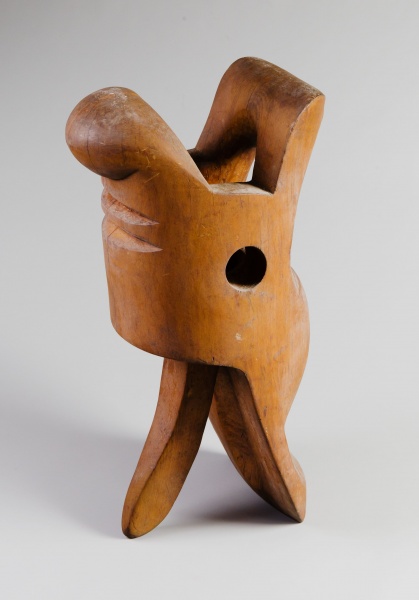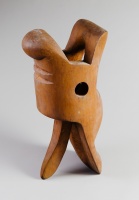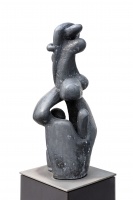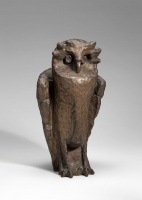

Erotica
| Author: |
Antanas Mončys (1921–1993) |
| Created: | 1968 |
| Material: | wood |
| Dimensions: | 51.50 × 23 cm |
Wood was an essential material for Antanas Mončys (1921–1993). In his sculptures, he not only developed his concept of the figure, but also fundamentally renewed his language of forms. While creating generalised, refined forms, he sought to retain a trace of remade nature; the motifs and associations that inspired him are recognisable in his work. In Mončys’ sculptures, both the volume of the wood or stone and the void are significant. In a sense, cavities become negative volumes and integral parts of the sculpture. Paraphrasing elements from his childhood, he retains traces of rural culture, while simultaneously creating modern sculptures. His wooden sculptures, inspired by Lithuanian folk art, such as chains hanging from distaffs, marked a new, vibrant and fruitful phase in his work. His chain sculptures, described as ‘vital’ by the art critic Viktoras Liutkus, reflect nature as their true home. Thus, Mončys’ wooden sculptures encompass a broad range of forms, symbolising life, vitality and abundance. These sculptures embody femininity, and, of course, eroticism. His eroticism is often tinged with a hint of irony or a smile, such as two figures from a single tree trunk fused together in an embrace, or chains clinging to each other (1968, Antanas Mončys Museum), where the male attribute is clearly recognisable.
Text author Jurgita Ludavičienė
Source: Law firm Valiunas Ellex art album THE ART OF MATERIALS. Compiler and text author Jurgita LudavičienėExpositions: "A Glance at the History of Lithuanian Art from Užupis", 30 August 2018 – 1 June 2019, Lithuanian Art Centre TARTLE (Užupio St. 40, Vilnius). Curator Giedrė Jankevičiūtė; "Free and Unfree. Lithuanian Art between 1945 and 1990", 9 September 2021 – 30 April 2022, Lithuanian Art Centre TARTLE (Užupio St. 40, Vilnius). Curators Dovilė Barcytė and Ieva Burbaitė.









